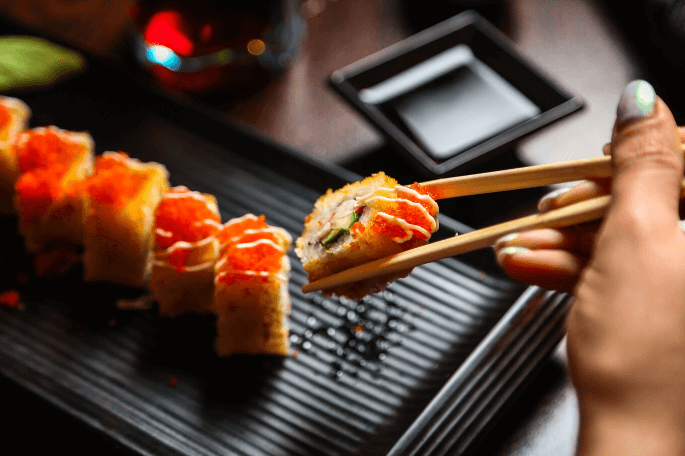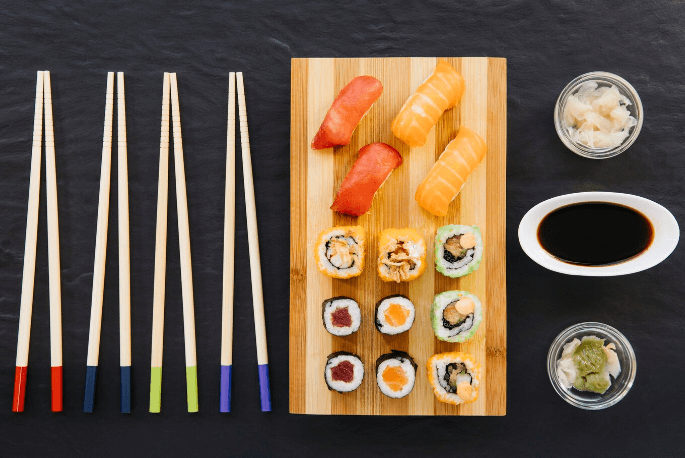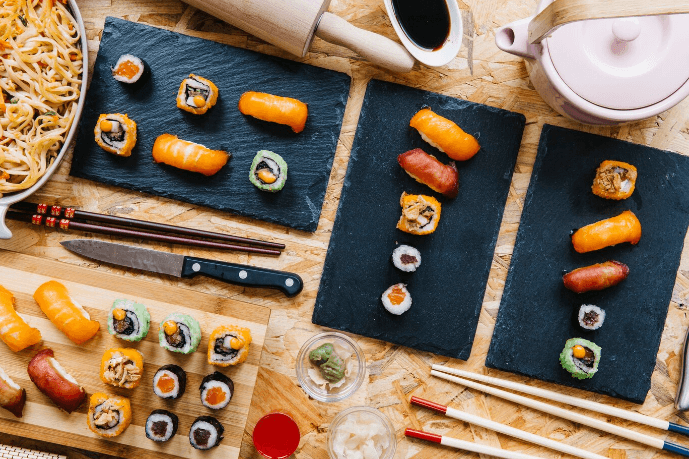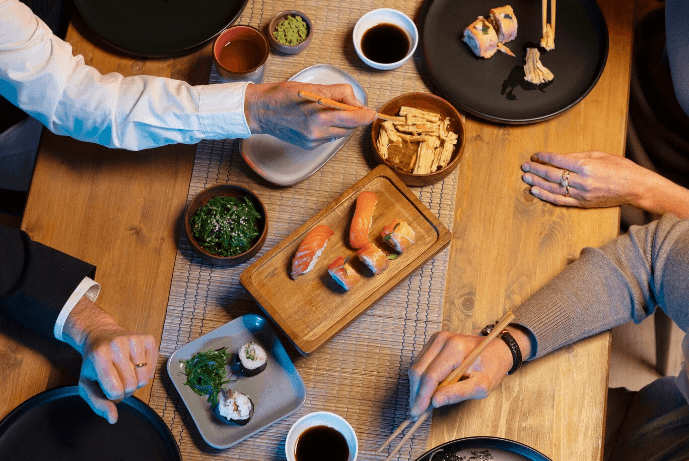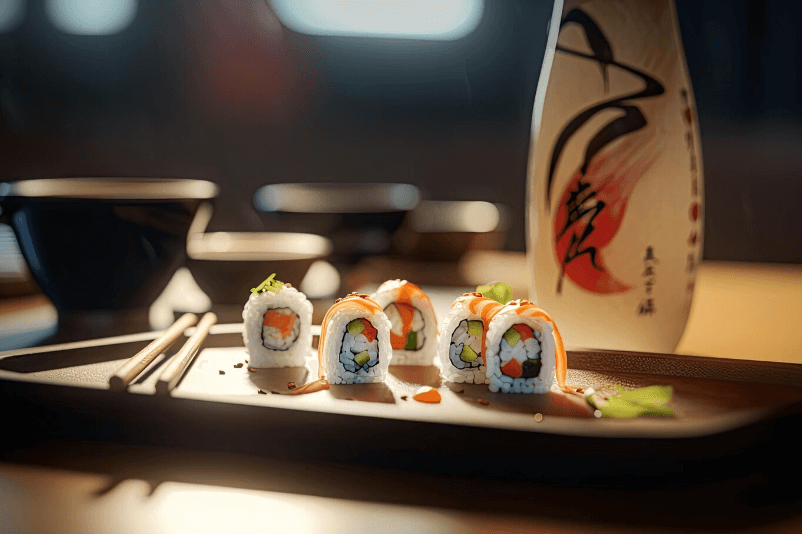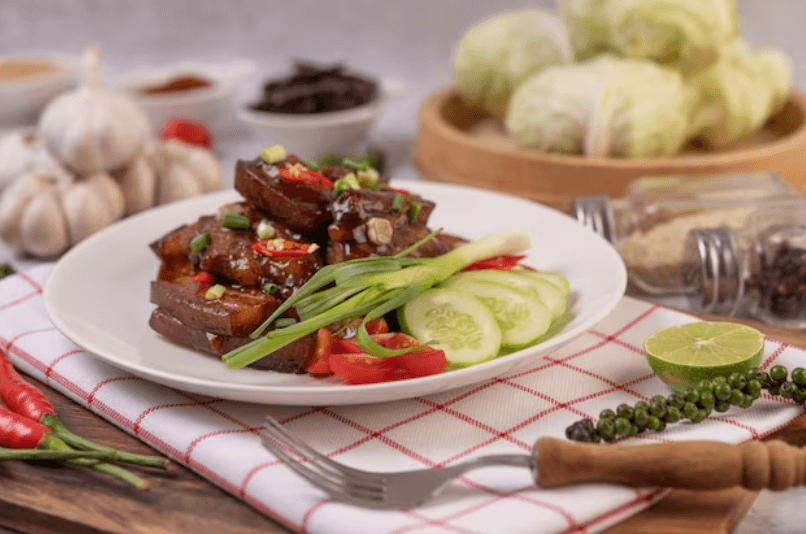Koi Fish in Japanese Sushi Tradition and Taste

Sushi, a traditional Japanese dish that has taken the world by storm, is known for its fresh and succulent seafood. Among the various types of fish used in sushi, one stands out for its unique beauty and taste – the koi fish. Not only does it add a vibrant pop of color to any sushi platter, but it also offers an unparalleled flavor that leaves your palate craving more. In this blog post, we will delve into the fascinating history and culinary techniques behind using koi fish in sushi dishes, explore ethical considerations surrounding their consumption, and offer tips on sourcing and selecting koi fish for your next sushi feast. So grab your chopsticks and get ready to dive into the delicious world of koi fish sushi!
Brief overview of the role of koi fish in sushi, setting the context for the article
Sushi is undoubtedly one of the most popular Japanese dishes worldwide, and koi fish is an important ingredient in many sushi recipes. Koi fish has been used in Japanese cuisine for centuries, and it holds a significant place in traditional sushi culture.
Koi fish adds a unique flavor to sushi that’s different from other types of fish. It’s buttery, smooth with a subtle sweetness that complements the vinegared rice perfectly. The texture also makes koi fish perfect for sashimi due to its firmness.
In Japan, koi symbolizes good luck and fortune; it represents perseverance through adversity because of its ability to swim upstream against strong currents. This symbolism ties into the cultural importance of using koi in sushi as well.
While some people might think that eating koi is unethical since they’re often associated with decorative ponds or water gardens, many consider consuming them as a way to honor their beauty while preserving their lives’ essence in another form.
Understanding the role of koi fish in traditional Japanese sushi culture can help us appreciate not only the dish but also how food plays an essential part in different cultures around the world.
The History of Koi Fish in Japanese Sushi
The history of koi fish in Japanese sushi is a fascinating one that dates back centuries. Initially, koi fish were not used in sushi dishes and were seen more as ornamental pets than a culinary ingredient. However, with the rise of Edo-style sushi during the 19th century, this changed.
It’s said that chefs would experiment with different types of seafood to create unique and delicious sushi dishes. Koi fish was one such experimental ingredient that quickly gained popularity due to its firm texture and delicate flavor.
Over time, using koi fish for sushi became commonplace in Japan’s coastal regions where fresh seafood was abundant. Chefs developed specific techniques to prepare the fish for consumption – including filleting it carefully to remove any bones or skin – ensuring that the dish was both safe and enjoyable for diners.
Today, while koi fish is not commonly used in mainstream sushi restaurants around the world due to ethical concerns surrounding their use as pets, it remains an integral part of traditional Japanese cuisine.
Origins and development of using koi fish in sushi dishes
Koi fish have been an important part of Japanese culture for centuries, and it is believed that they were first used in sushi dishes during the Edo period (1603-1868). During this time, sushi was primarily a street food sold by vendors known as yatai. They would often use koi fish as a cheaper alternative to other types of seafood.
Over time, the use of koi fish in sushi became more refined and specialized. Sushi chefs began to experiment with different preparation techniques, such as aging the fish before using it in their dishes. This helped to enhance its flavor profile and texture.
Today, koi fish is still used in certain types of traditional sushi dishes. However, due to concerns about sustainability and animal welfare, many modern sushi restaurants avoid using koi fish altogether. Instead, they focus on sourcing high-quality seafood from sustainable sources that meet ethical standards.
Despite its controversial history in the world of sushi cuisine, there’s no denying that koi fish has played an important role in shaping Japanese culinary traditions over the years. As we continue to explore new ways of preparing and consuming food around the world today, it will be interesting to see how these traditions evolve over time while keeping up with changing societal values and expectations.
Culinary Techniques for Koi Fish Sushi
When it comes to preparing koi fish sushi, there are various culinary techniques that chefs use to bring out the best flavor and texture of the fish. One important technique is filleting, which involves removing the bones and skin from the koi fish before slicing it into thin pieces for sushi.
The aging process is also essential in enhancing the taste of koi fish sushi. Chefs typically age the filleted koi for a few days in a controlled environment with low humidity and temperature. This allows enzymes to break down proteins and improve its umami flavor.
Another technique used in preparing koi fish sushi is presentation. Koi sashimi or nigiri should be served fresh on a bed of ice or garnished with grated wasabi or shiso leaves for added aroma and flavor.
Chefs may also experiment with different sauces such as ponzu sauce made from citrus juice, soy sauce, vinegar, and dashi stock. Alternatively, they can create unique marinades using miso paste or sake.
Mastering these culinary techniques takes years of practice and experience. But when done correctly, koi fish sushi becomes an unforgettable gastronomic experience that showcases Japanese culinary artistry at its finest.(Different Types of Nigiri)
Description of various techniques used to prepare koi fish for sushi, including filleting, aging, and presentation
Koi fish sushi requires a certain level of skill and precision in preparation. The first step is to carefully fillet the fish, removing its bones and skin. This process can be challenging because koi fish have more bones than other types of fish commonly used in sushi.
After filleting, the next technique is aging the fish properly. Koi fish meat has a delicate taste that gets better with time. Chefs typically age it for at least 24 hours before serving it as sushi. Aging allows enzymes to break down proteins in the flesh, which enhances both texture and flavor.
Presentation plays an important role in koi fish sushi preparation. Chefs often use traditional techniques such as carving intricate designs into vegetable garnishes or arranging sashimi slices on beautiful platters to make their dishes visually appealing.
Preparing koi fish for sushi requires patience and attention to detail from start to finish: from proper filleting techniques to aging it just right and presenting it beautifully on a plate – every step matters when creating delicious and authentic Japanese cuisine!
The Taste and Texture of Koi Fish Sushi
Koi fish sushi is known for its unique taste and texture. The flavor of koi fish can be described as mild, sweet, and slightly earthy with a delicate touch of umami flavor. When paired with the right ingredients such as wasabi and soy sauce, it produces an unforgettable experience on one’s palate.
The texture of koi fish sushi is also notable. It has a firm yet tender flesh that melts in your mouth, providing a satisfying savory sensation. Koi fish are typically aged between two to three days to enhance their flavors and achieve the ideal texture for sushi preparation.
When preparing koi fish sushi, chefs take extra care not to overpower its natural flavors by using minimal seasoning or sauces. Instead, they focus on highlighting the distinct qualities of the koi while complementing them with other ingredients such as rice or vegetables.
Koi fish sushi may not appeal to everyone due to cultural differences and personal preference when it comes to seafood consumption. However, those who have tried it often rave about its unique taste profile that sets it apart from other types of sushi.
If you’re willing to try something new and daring in Japanese cuisine, koi fish sushi might just be what you need for an exciting culinary adventure!
An exploration of the unique flavors and textures of koi fish sushi
Koi fish sushi is a delicacy that has been enjoyed in Japanese cuisine for centuries. The unique flavors and textures of koi fish sushi make it stand out from other types of sushi.
The flavor profile of koi fish is delicate, yet distinct. It has a mild taste with subtle hints of sweetness that are complemented by the umami flavor found in the rice and soy sauce used to prepare the dish. The texture of koi fish sushi is also noteworthy, as it has a firm yet tender texture that melts in your mouth.
One reason why koi fish sushi stands out amongst other types of seafood-based dishes is due to its versatility in preparation techniques. Koi can be prepared using traditional methods such as filleting and aging to bring out its natural flavors or sliced thinly for sashimi-style servings.
Additionally, chefs have experimented with new ways to present this dish – adding herbs, spices or even fruit garnishes depending on their regional preference or personal style.
It’s important to note that ethical considerations should always be taken into account when consuming any type of seafood, including koi fish. Sourcing and selecting sustainable options through responsible suppliers will help maintain healthy populations while minimizing environmental impact.
The unique flavors and textures found in koi fish sushi make it an unforgettable culinary experience for anyone who enjoys Japanese cuisine or simply wants to try something new!
Ethical Considerations Surrounding Koi Fish Sushi
When it comes to consuming sushi, ethical considerations should always be taken into account. This is especially true when it comes to koi fish sushi. Koi fish are often considered as pets and revered for their beauty in Japanese culture.
Some people argue that using koi fish in sushi dishes is unethical due to their cultural significance and value as living creatures. Additionally, there are concerns about the treatment of these fish during farming and harvesting practices.
To address these concerns, some restaurants opt not to serve koi fish sushi at all or source them from certified sustainable farms where they are raised ethically and with minimal impact on the environment.
It’s important for consumers who enjoy this type of dish to do their research before ordering or purchasing koi fish sushi. They can inquire about the sourcing practices of the restaurant or supplier, look for certifications indicating sustainable practices, or choose alternative types of sushi that don’t use controversial ingredients.
Ultimately, making informed choices about what we consume can have a significant impact on our environment and society as a whole.
Alternative Uses of Koi Fish in Japanese Cuisine
Aside from being used in sushi, koi fish also have a number of alternative uses in Japanese cuisine. One of the most popular ways to prepare koi fish is by grilling or frying them whole and serving them as a main dish with soy sauce and other seasonings.
Another common way to use koi fish is by incorporating it into stews or soups, such as the famous nabe hot pot dish. The flavorful broth helps to bring out the natural taste of the fish while retaining its delicate texture.
In addition, some traditional Japanese desserts also make use of koi fish ingredients such as their eggs which are rich in flavor and nutrients. Koi carp roe is often used as an ingredient for making taramasalata – a Greek dip that has become quite popular all over Japan.
There are many different ways to incorporate koi fish into Japanese cuisine beyond just sushi dishes. Whether you prefer your koi grilled or fried, served up in stews or soups, or even baked into sweet treats – this versatile ingredient provides endless possibilities for culinary exploration!
Sourcing and Selecting Koi Fish for Sushi
Sourcing and selecting koi fish for sushi is an important process that requires attention to detail. When choosing the right fish, it’s essential to ensure its freshness, quality, and ethical sourcing.
To begin with, it’s best to source koi fish from reputable suppliers who adhere strictly to ethical practices in fishing. This not only ensures that the fish are healthy but also supports sustainable fishing practices.
When selecting koi fish for sushi dishes, it’s essential to look out for certain characteristics such as its skin coloration and texture. A fresh koi has bright scales with no discoloration or blemishes. The flesh should be firm but not too hard or soft.
Another factor worth considering is the size of the fish you choose since different sizes work better depending on how you plan on serving them in your dish. For instance, smaller-sized fillets may be ideal when preparing nigiri sushi while larger cuts can be perfect for sashimi slices.
Ultimately one should always consider quality over quantity when sourcing their preferred Koi Fish; this guarantees a more satisfying experience when eating it raw as Sushi.
Conclusion
Koi fish sushi is a fascinating part of Japanese culinary tradition. From its origins as a way to preserve fish for later consumption to its current status as a delicacy, koi fish sushi has played an important role in Japanese cuisine for centuries. However, it’s also important to consider the ethical implications of consuming this dish and to choose responsibly sourced ingredients.
Whether you’re looking to try koi fish sushi yourself or simply want to learn more about this unique aspect of Japanese culture, exploring the history and techniques behind this dish can be both educational and enjoyable. By taking the time to appreciate the complexity and artistry involved in preparing koi fish sushi, you can gain a deeper appreciation for one of Japan’s most beloved culinary traditions.
FAQs
What do koi fish symbolize in Japanese culture?
In Japanese culture, koi fish symbolize perseverance, strength, and good fortune. They are associated with these qualities due to their ability to swim upstream against strong currents, which is seen as a display of determination and resilience. Koi fish are also believed to bring good luck, making them popular decorative elements in gardens and ponds.
Why don’t we eat koi fish?
Koi fish are primarily bred and kept for their aesthetic appeal and symbolic significance, rather than for consumption. They are typically more expensive than other fish due to their ornamental value, making them less practical for eating. Additionally, their taste and texture may not be as desirable as other fish species commonly used for culinary purposes.
How does koi fish taste?
Koi fish have a mild, somewhat muddy or earthy flavor, which is not as appealing as other fish species commonly used for culinary purposes. The texture of koi fish can also be somewhat chewy, making it less desirable for consumption compared to other fish.
Do the Japanese eat koi fish?
While koi fish are not a common food source in Japan, there are instances where they may be consumed, particularly in rural areas or as a specialty dish. However, it is essential to note that the consumption of koi fish is not widespread in Japanese cuisine, and they are predominantly valued for their ornamental and symbolic qualities.
What is the koi fish myth?
The koi fish myth is a Chinese and Japanese legend that tells the story of koi fish swimming upstream against strong currents to reach the mythical “Dragon’s Gate.” According to the legend, any koi fish that can successfully leap over the gate will be transformed into a powerful dragon. This tale symbolizes the virtues of perseverance, determination, and the ability to overcome obstacles, which are qualities often associated with koi fish in both Chinese and Japanese cultures.
